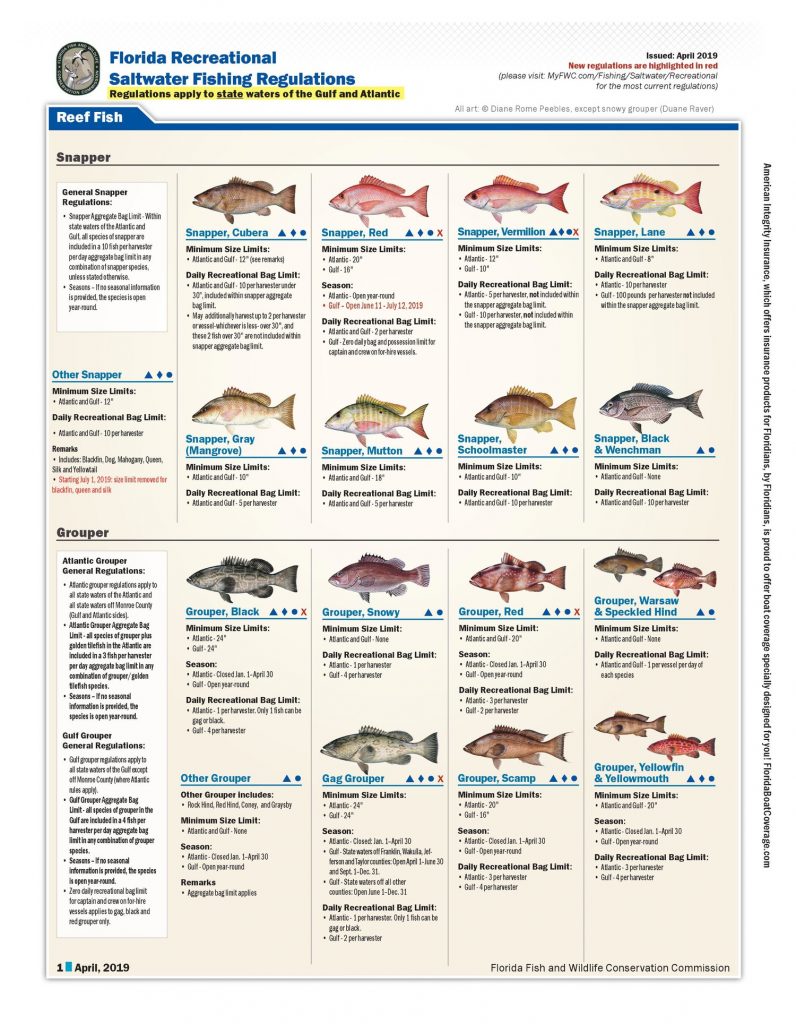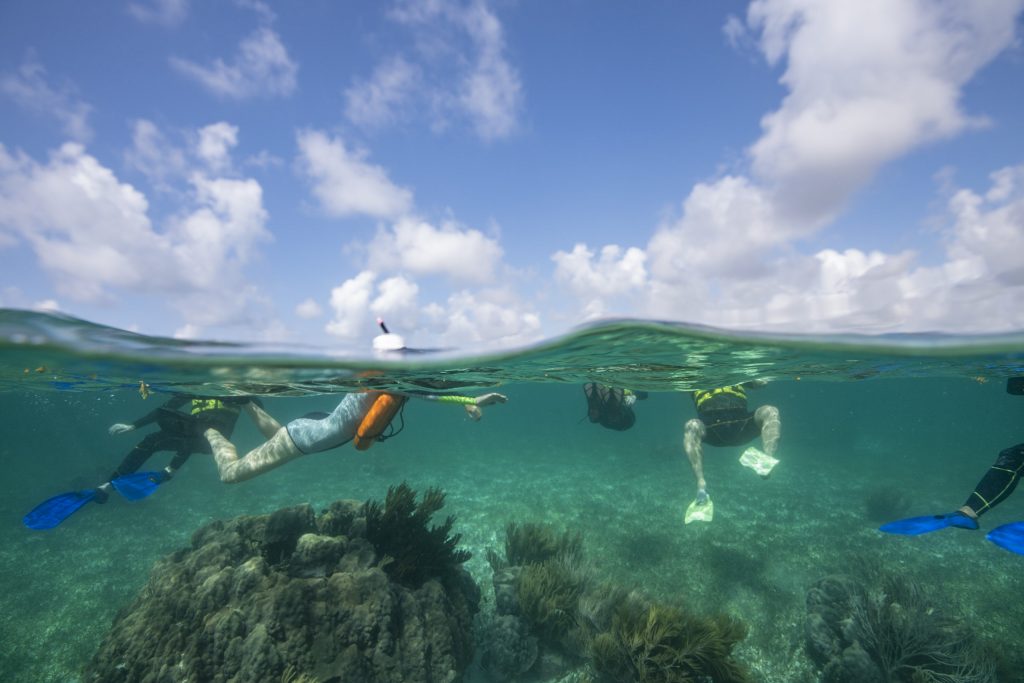Recreational Use
Recreation is an important use of many coral reef areas. Recreational uses can be extractive (e.g., fishing) or non-extractive (e.g., diving, snorkeling, boating, and catch-and-release fishing). Such uses are a source of pressure on coral reefs and a source of income for the community. Recreational users and commercial tourism operators play an important role in reef conservation and management and are often key partners with reef management agencies in efforts to protect coral reefs.
Through a balanced approach focusing on sustainable use, recreational uses can be managed to minimize their impacts on coral reefs while strengthening the contributions of recreational users to reef management and the economy. Key approaches for managing recreation include setting limits, managing reef activities, and encouraging best practices.
Setting Limits
- Carrying capacity — One approach to preventing unacceptable impacts from human use is to set limits on numbers of users and types of activity based on the capacity of the ecosystem to cope with impacts. In practice, it can be difficult to determine environmental carrying capacity, but limits can be set using best available knowledge and an approach inclusive of reef users.
- Limits of acceptable change (LAC) — This involves setting limits based on reef users’ behavior and can be a powerful approach for getting users (especially commercial tourism operators) to adopt best practices, as the numbers of users is dependent on the size of their ecological footprint. A key requirement of an LAC approach is a system for regularly monitoring reef condition as part of a dynamic management system with thresholds and actions.

Example of Florida saltwater fishing regulations including bag limits and seasons. Source: Florida Fish and Wildlife Conservation Commission
Managing Reef Activities
Once the amount of sustainable use at a site has been established, managers need to implement systems for managing activities. Where recreational use is managed through regulation and/or a permit system, enforcement can occur through a combination of self-regulation, spot-checks, and surveillance. Non-commercial uses often do not require permission, so less regulatory approaches may be needed to reduce impacts such as anchoring, crowding, and excessive vessel traffic.
Installation of mooring buoys and associated education campaigns can reduce the amount of anchoring. Reduced shore-based infrastructure, such as limited vessel berths or car parking at boat launch sites, can help control the amount of boat traffic around a reef. User-pays systems, such as day passes, can be used to cap numbers of visitors to a site or disperse use to a wider area and reduce pressure on the most popular sites.
A range of other approaches can also be used to reduce concentration of use to a fewer number of hardened sites, such as installing moorings or installing attractions (for example, artificial reefs or underwater sculpture parks, such as those in Mexico).
Encouraging Best Practices
The impacts of recreational activities can also be reduced through environmentally sensitive behavior. There are many sources of information on best practices for tourism that help to codify behaviors that reduce risks to reefs. These include the Responsible Reef Practices developed for the Great Barrier Reef and guidance provided by the Coral Reef Alliance and the Green Fins program.
Even for extractive recreational activities like fishing, impacts can be reduced through setting and enforcing bag and size limits, and by encouraging adoption of best practices. Adoption of best practices can be encouraged through systems of formal recognition such as eco-certification programs and eco-rating schemes.

The use of life jackets can help snorkelers maintain buoyancy and reduce harm to corals and other organisms. Photo © Jennifer Adler
MANAGEMENT GUIDANCE
-
Diving Best Practices
- Avoid all contact with corals and other marine life
- Never chase or ride marine animals
- Take nothing living or dead out of the sea, except recent garbage
- Maintain good buoyancy control
- Practice good finning technique and body control
- Ensure all equipment is well secured so that it cannot drag or snag on corals
- Only handle, manipulate, or feed marine life under expert guidance, never just to take photographs
- Avoid using gloves and kneepads in coral reef environments
Anchoring Best Practices
- Examine the area before anchoring to find the best location
- Anchor in sand or mud away from corals
- Anchor away from fragile or sensitive areas including bird and turtle nesting areas, indigenous heritage sites, and shipwrecks
- Anchor your boat a safe distance away from other boats
- Look out for the safety of people in the water when dropping your anchor
- Never wrap the anchor rope or chain around bommies or large coral heads
- If anchoring ashore, carefully place the anchor to minimize shore and coastal damage
- If anchoring overnight, anchor before nightfall and double check the swing room
- Carry enough chain and line for the depth you want to anchor in
- Use the correct anchor for your situation and environment
- Retrieve the anchor when the line is vertical
- If the anchor is caught on the reef, free it by hand wherever possible
- Do not force the anchor free by motoring forward
- Use only as much chain as you need to hold the vessel, without compromising safety
- Keep watch to make sure the anchor is not dragging
- Motor towards the anchor when hauling it in
Fishing Best Practices (Guidelines from the Great Barrier Reef)
- Actively attend your fishing gear at all times while fishing
- Take only what you need – do not necessarily fish to the bag limit
- Do not use pest or non-native fish for bait. Never release introduced species into the water
- Do not fish where fish feeding takes place, for example as part of a tourist program
- Do not fish near a commercial dive site or pontoon
- Do not fish at known or suspected fish spawning aggregation sites
- Fish a safe distance from marine animals (such as dolphins, whales, turtles, and dugongs) and bird roosting or nesting areas
- If you’re unsure of the fish identity or size, release the fish immediately
- Return all undersized and unwanted fish quickly to minimize injury
- If you’re keeping the fish, remove it from the hook or net immediately and kill it humanely
- Do not litter – clean up all fishing gear (such as discarded tackle and line, and bait bags) and take it back to shore to dispose of it properly
- After filleting fish, avoid disposing of the frames at boat ramps and popular areas
- Participate in fish monitoring and research programs where available
